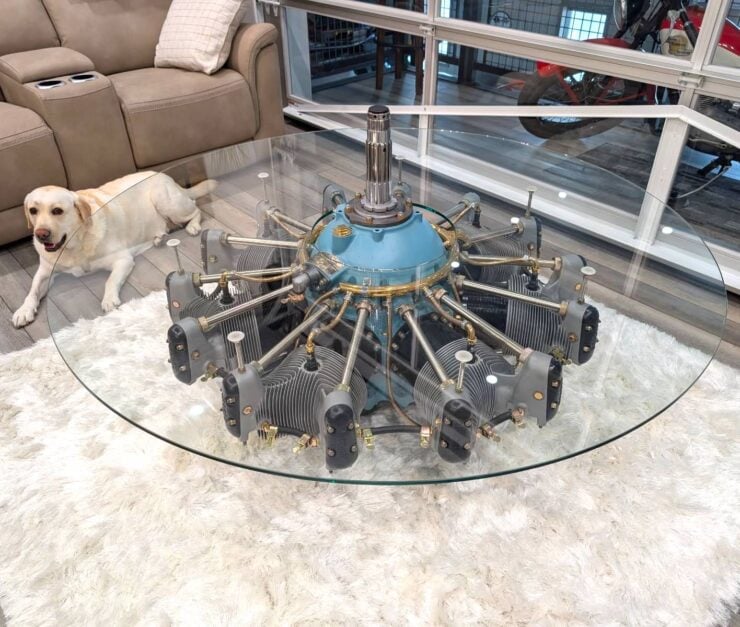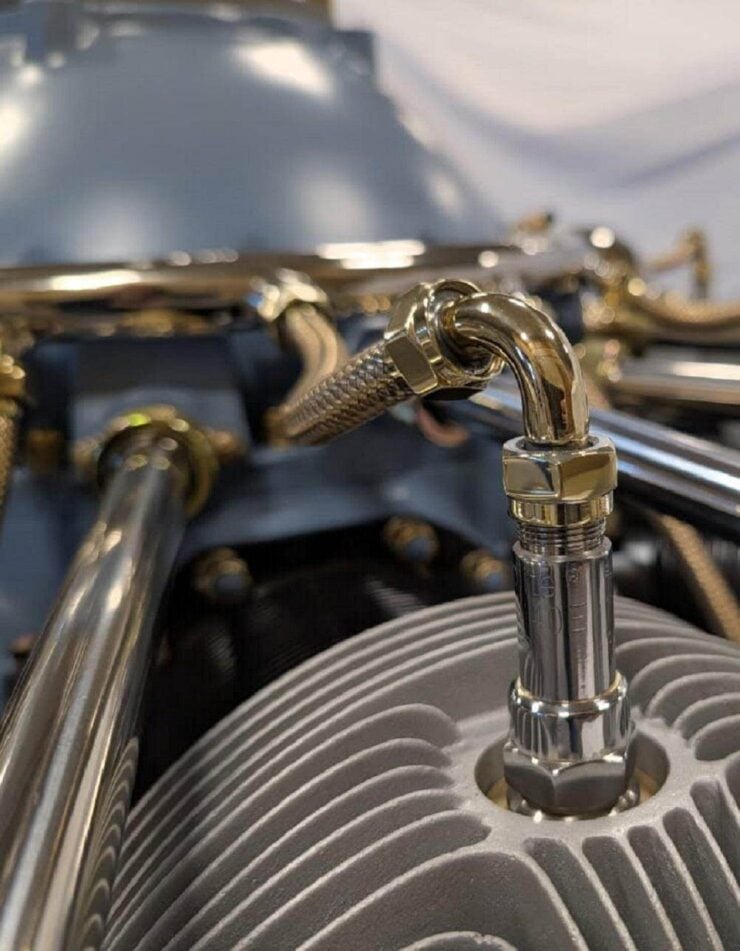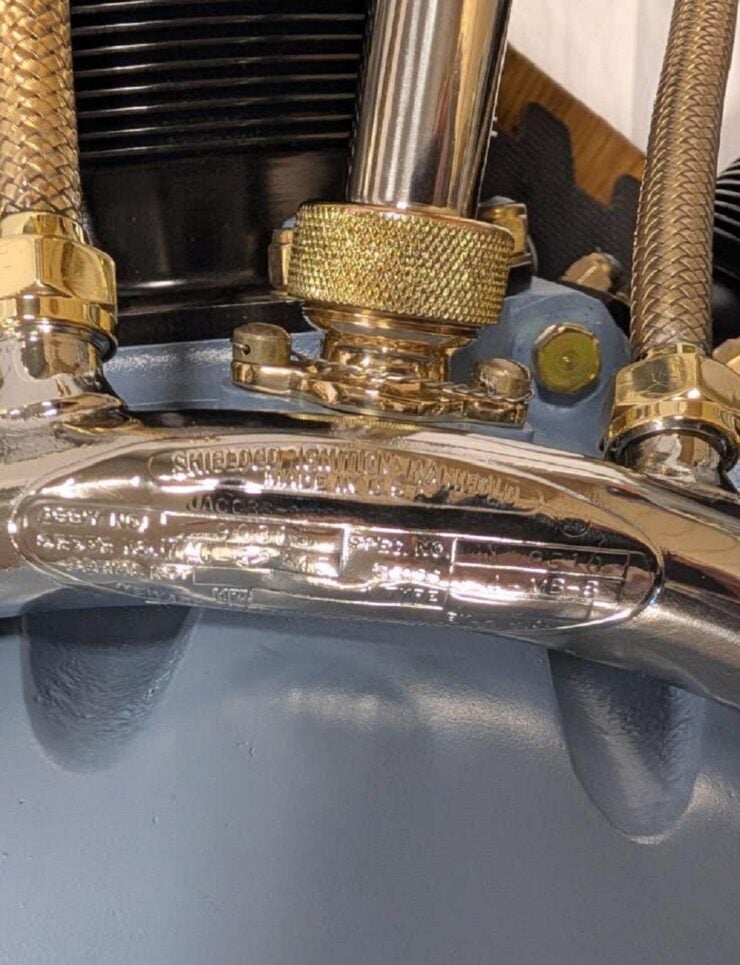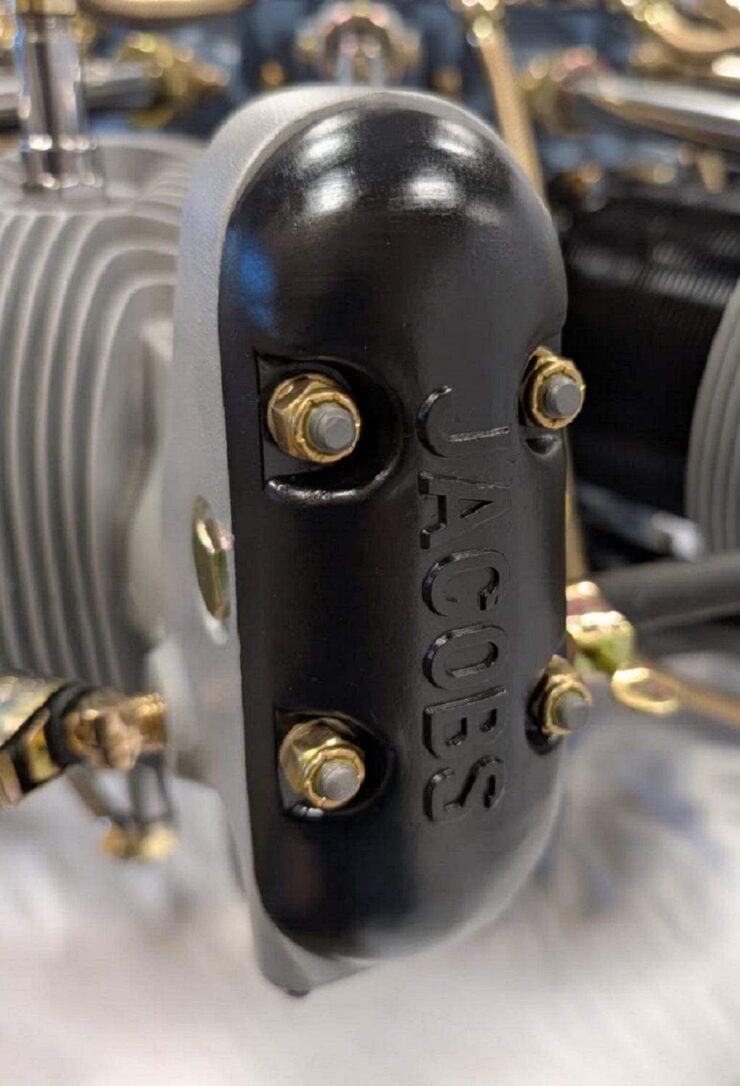This is a coffee table made from a WWII-era Jacobs R-755 radial engine that dates to 1942. It now has a tempered glass top that measures 60″ in diameter, and the table rides on four nylon casters.
The engine was built into a coffee table by the seller, they stripped and refinished it, painted the crankcase in light blue, then re-plated and polished the hardware. It’s now looking for a new owner, and it’ll make an excellent centerpiece to any room – not to mention a phenomenal conversation piece.
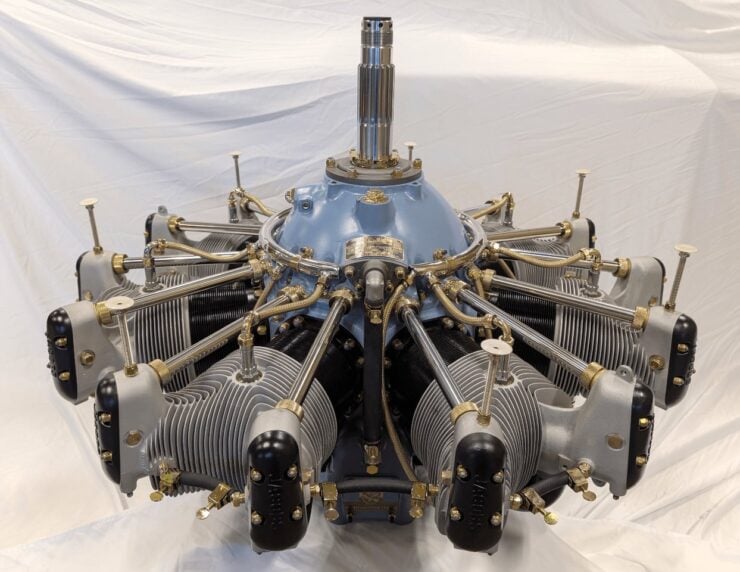

The Jacobs R-755 Radial Engine
The Jacobs R-755 is remembered today as one of the most reliable air-cooled radial engines ever produced for light aircraft. It was developed by the Jacobs Aircraft Engine Company in the 1930s, and first formally introduced in 1934.
The R-755 was designed with simplicity and durability as guiding principles – the engine has a seven cylinder radial configuration arranged in a single row around a central crankcase. Each cylinder has a bore of 5.25 inches and a stroke of 5 inches, with a total displacement of 757 cubic inches (12.4 liters) – the source of its “755” model designation.
The R-755 initially produced 225 bhp at 2,000 rpm, though later variants would push output to 275 and even 300+ bhp. What made this engine particularly useful for the aircraft manufacturers of the time was its combination of a reasonable weight (approximately 510 lbs dry) and its reliability.
Jacobs Aircraft Engine Company was founded in 1926 by Albert Jacobs in Pottstown, Pennsylvania. The company positioned the R-755 as a competitor to similar offerings from Continental and Pratt & Whitney. The R-755 found its way into a range of aircraft, including the Boeing-Stearman PT-18 Kaydet, Cessna 195 business liner, Grumman Ag Cat, North American AT-6 trainers, Beechcraft Staggerwing, and various Waco biplanes.
During World War II, the engine powered a number of military training aircraft (including the Stearman), helping to prepare thousands of fighter and bomber pilots for combat service. Production of the engine continued through the 1940s, with thousands of R-755 engines manufactured, mostly for the war effort.
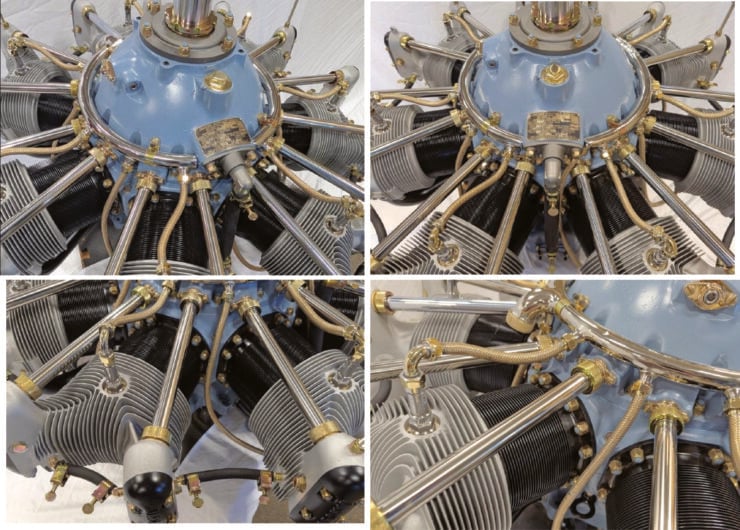


Following WWII, many surplus engines and aircraft powered by the engines became available to the general public – often for not a whole lot of money. Today there are many R-755 engines still powering vintage aircraft, and plenty of radial engine specialist aircraft mechanics cut their teeth working on them
The engineering principles that made the R-755 successful seem almost quaint by modern standards: the engine has many oversized components, conservative power ratings, and simple systems designed with ample safety margins and ease of maintenance in mind – that last feature would make a welcome change for many modern mechanics.
These characteristics resulted in an engine that could routinely reach time between overhaul (TBO) intervals of 1,200 hours or more – impressive for its era and not bad even by modern standards. Variants of the engine remained in production through to the 1970s, and even today parts availability is good thanks to strong aftermarket demand.
The Jacobs R-755 Radial Engine Coffee Table Shown Here
Given the fact that this Jacobs R-755 radial engine coffee table has a total diameter of 60 inches and a weight of approximately 250 lbs, it may not be suitable for everyone – but for the right space it’s hard to imagine a better piece of furniture to build your living room around.
The engine was refurbished recently and it rides on four caster wheels, making it relatively easy to move around despite the considerable weight.
It’s now being offered for sale on Bring a Trailer out of Hampshire, Illinois at no reserve, and the seller notes that the glass table top will be shipped separately. If you’d like to read more or place a bid you can visit the listing here.
Images courtesy of Bring a Trailer
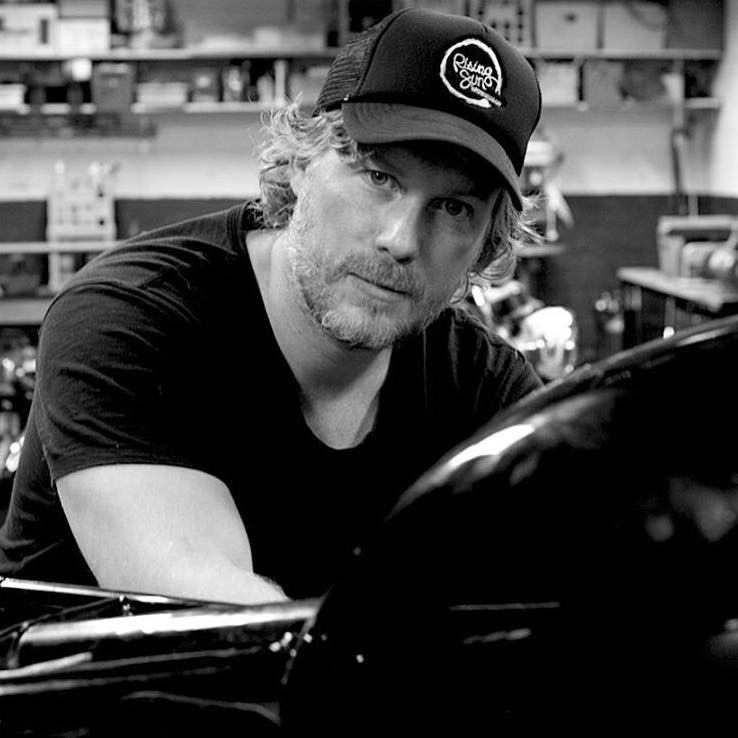

Articles that Ben has written have been covered on CNN, Popular Mechanics, Smithsonian Magazine, Road & Track Magazine, the official Pinterest blog, the official eBay Motors blog, BuzzFeed, Autoweek Magazine, Wired Magazine, Autoblog, Gear Patrol, Jalopnik, The Verge, and many more.
Silodrome was founded by Ben back in 2010, in the years since the site has grown to become a world leader in the alternative and vintage motoring sector, with well over a million monthly readers from around the world and many hundreds of thousands of followers on social media.


